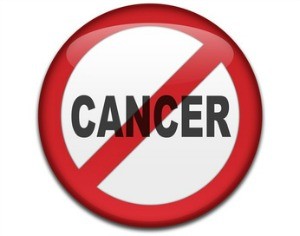
Ebola outbreak is one of the largest Ebola outbreaks in history and the first in West Africa. It is affecting four countries in West Africa: Guinea, Liberia, Nigeria, and Sierra Leone, but does not pose a significant risk to the U.S. public. CDC is working with other U.S. government agencies, the World Health Organization, and other domestic and international partners in an international response to the current Ebola outbreak in West Africa.
For the third time in the history of the US Centers for Disease Control and Prevention (CDC), the agency has raised its level of emergency alertness to “Level 1″—this time in response to the Ebola virus, following outbreaks in West Africa.
CDC Level 1 emergency response, reserved for the most dire health emergencies, was declared for the first time in 2005 following Hurricane Katrina, and again in 2009 for the H1N1 influenza outbreak.
What Is Ebola?
The Ebola virus was first discovered in 1976 when an outbreak occurred in Sudan. So far, five subtypes have been identified:
- Zaire ebolavirus (ZEBOV), identified in 1976, is thought to be the most virulent
- Sudan ebolavirus, (SEBOV)
- Ivory Coast ebolavirus (ICEBOV)
- Ebola-Reston (REBOV), isolated from monkeys in the Philippines in 1989. In 2009, this variant was thought to have been transferred from pigs to humans
- Bundibugyo ebolavirus (BEBOV). The first outbreak of this virus occurred in the Bundibugyo District, Uganda, in 2007. The virus …
How Ebola Spreads
Ebola is introduced into the human population through close contact with the blood, secretions, organs or other bodily fluids of infected animals. In Africa, infection has been documented through the handling of infected chimpanzees, gorillas, fruit bats, monkeys, forest antelope and porcupines found ill or dead or in the rain forest.
Ebola then spreads in the community through human-to-human transmission, with infection resulting from direct contact (through broken skin or mucous membranes) with the blood, secretions, organs or other bodily fluids of infected people, and indirect contact with environments contaminated with such fluids. Burial ceremonies in which mourners have direct contact with the body of the deceased person can also play a role in the transmission of Ebola.
Where Did the Ebola Virus Come from?
Potential hosts of the Ebola virus include humans, various monkey species, chimpanzees, gorillas, baboons, duikers (a type of African antelope), two species of rodents, one species of shrew, and three species of fruit bats. The current outbreak in West Africa is thought to originate from either bats or primates.
“[T]here's a group of diseases, called zoonotic diseases, which pass from nonhuman animals into humans. And spillover is the moment when a new virus has the opportunity to leap from a bat, monkey or rodent into its first human victim. We're pretty sure that's what happened with the Ebola outbreak in West Africa…In a recent NPR interview, David Quammen, author of Spillover, a book that traces the evolution of viruses that move from animals to people, said:
We don't know where Ebola lives permanently — its so-called reservoir host. A reservoir is the animal in which a pathogen or virus lives inconspicuously, without causing symptoms…
There was one Ebola outbreak in the Democratic Republic of Congo, where it was suspected that the first case involved contact with a big fruit bat. There were some large, migratory fruit bats roosting along the river in this area.
One man in particular bought a bat at a market and carried it home. Then, I believe, the infection passed from him to his daughter. There was a strong, but not definite, implication that the killing of fruit bats, and the selling and buying of them in the market, is what triggered an outbreak.”
Fast-Tracked Ebola Vaccines Moving Into Human Trials
A number of vaccines are in the works, with human trials already underway. One human trial is set to begin in September. According to Newsweek:
“Once phase 1 testing is completed in January [2015], Fauci expects phase 2 will be conducted on both American and African populations. ‘If it proves to be safe, you expand the trial,' he says. ‘All of that, the second phase, takes several months. You need to scale up production of the virus.'
From there, if the vaccine is successful in both US and African populations, it may skip the third phase of trials and go directly to Africa. According to Fauci, the earliest this might happen is ‘sometime before the end of 2015'—a timetable he describes as ‘lightning speed.'”
million,” as it did nothing to halt the spread of influenza. According to The Telegraph:
“The review, authored by Oxford University, claims that Roche, the drug's Swiss manufacturer, gave a ‘false impression' of its effectiveness and accuses the company of ‘sloppy science.' The study found that Tamiflu, which was given to 240,000 people in the UK at a rate of 1,000 a week, has been linked to suicides of children in Japan and suggested that, far from easing flu symptoms, it could actually worsen them.”
In reality, the 2009 flu season turned out to be far milder than average, despite the H1N1 variant of the influenza virus being in circulation. An explosive CBS News investigation published in October 2009 clearly showed that the vast majority of “swine flu cases” were not even influenza at all, let alone H1N1. Rather, based on lab testing, the vast majority of people who reported flu-like symptoms actually had some other type of cold or upper respiratory infection.
Now, health officials warn that an Ebola outbreak in the US is just “one airline passenger away.” While theoretically plausible, panic should be tempered by the fact that the American medical system is far better equipped to contain a non-airborne virus like Ebola, compared to West Africa. According to Anthony Fauci, director of the US National Institute of Allergy and Infectious Diseases, it would be “extraordinarily unlikely that it will be an outbreak at all because of the way we take care of people, how we have the capability of isolating them, how we understand what one needs to do to protect the health care providers and the kinds of health care facilities we have.”
Why Does the CDC Promote Unreasonable Fear and Panic?
The fact is, the CDC is trumping up the fear factor, while simultaneously downplaying its own role in potentially creating a devastating outbreak through its own negligence. Mere weeks ago, the CDC was found to have accidentally released two dangerous pathogens: anthrax and H5N1 avian influenza. Dr. Thomas R. Frieden, head of the CDC, recently issued a report that admits to sloppy work ethics at the lab. If you ask me, we should probably be more afraid of what the CDC does with the Ebola virus than anything…
The CDC promoted and was intimately involved with the film Contagion, which was in part filmed at the CDC headquarters in Atlanta, GA. In the summer of 2011, the agency again gave a nod to Hollywood, creating a Zombie Preparedness Campaign; ostensibly to bring awareness to pandemic, hurricane, earthquake, and other disaster preparedness.
Promoting Fear to Further Financially-Driven Agendas
As I've discussed many times previously, there are tremendous hazards inherent with fast-tracking vaccines. By their very definition, fast-tracked vaccines are those that have received very little safety testing prior to being used, and US regulations already place ALL the risk on the public receiving the vaccine, regardless of whether the vaccine is mandated or voluntary. Vaccine makers can more or less create a lethal vaccine and get away scot free at this point; they're that well-protected against liability for adverse events of pandemic vaccines.
The PREP Act removes your right to a trial jury unless you can provide clear evidence of willful misconduct that resulted in death or serious physical injury. But that's not all. But first you must apply for and be granted permission to sue by the DHHS Secretary. The most problematic aspect of the PREP Act is that it removes all financial incentive to make a safe product. In fact, vaccine makers now have a negative incentive to test it for safety, because if they are aware of problems, then they could potentially be held liable for willful misconduct!
As long as they can prove they “didn't know” of any problem, they will not be liable for damages. Hence, it's in their best interest to know as little as possible about the adverse reactions it might cause. It seems unimaginable, but under these pandemic conditions, you and your children are little more than unpaid human trial subjects for experimental, fast-tracked vaccines (and other pandemic drugs).
For the most part, most all of the conventional media portrays the entire vaccine process as something heroic and vital to the health of our culture, and they will be reluctant to ever promote any news that contradicts this belief. But as recent history shows, the GREATEST danger could actually be the CDC and other bioterror labs.
I believe we need to consider the financial motives behind the promotion of pandemics and the vaccines that go along with them. It is vital for you to carefully research ALL sides of the vaccine issue and not merely trust federal public health authorities, most physicians, and the media, as they are largely influenced by massive conflict of interest and collusion. Seek other independent and objective views like those at NVIC before you make any important decisions about deciding to vaccinate.
![]() The outbreak is already the deadliest on record and has shown no signs of slowing. About 42.5 percent of all Ebola deaths since the virus was discovered in 1976 have occurred since March 2014, according to WHO data.
The outbreak is already the deadliest on record and has shown no signs of slowing. About 42.5 percent of all Ebola deaths since the virus was discovered in 1976 have occurred since March 2014, according to WHO data.
Please Read this Article at Articles.Mercola.com





Leave a Reply